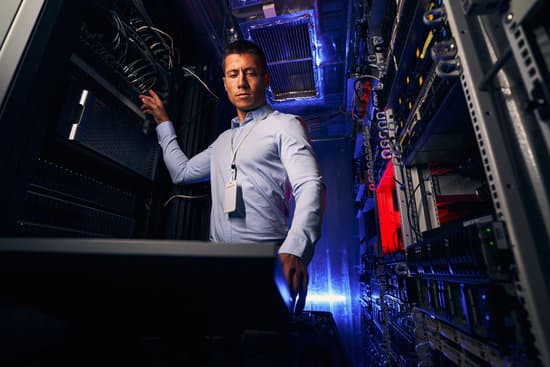5G Deployment Calls for Contrasting Cloud and Edge Architecture That Can Coexist

As 5G mobile technology rolls out across the country networks are responding with seemingly contrasting decentralized edge computing and centralized C-RAN architecture that, surprisingly, can not only coexist, but can take advantage of existing infrastructure.
C-RAN, which stands for Cloud-Radio Access Network or Centralized-Radio Access Network, and edge computing architecture installations are both a move away from the traditional mobile network RAN infrastructure that features a radio base with a large antenna.
The amount of 5G data and traffic increases daily with PwC reporting that 75 percent of the country is now covered by mobile operators offering the new technology with the number likely to increase another 5 percent by July 2021.
As of Jan. 1, 2021, PwC estimated that 5G-enabled devices had 8 percent of the market with that percentage increasing to 12 percent by July.
“Our industry specialists expect 5G to hit a tipping point in 2023,” said the PwC report. “Building a 5G network is different from 4G because of the inherent specifications of the technology.”
While the active equipment in a C-RAN gets moved away from the network edge and centralized or moved to “the cloud” vs. edge computing where applications and data are hosted and processed closer to the network edge, both can play a role in the networks of the future.
“Service Providers need to plan for each of these trends with a network that is expandable, flexible and accessible,” writes AFL’s Josh Simer in Structured Cabling News.
C-RAN Accentuates Trend Towards Smaller Cell Sites
5G with its new higher frequencies will require network providers to move away from macro cell sites to multiple, smaller cell sites across a coverage area.
“The newer bands that become available tend to be higher in frequency than those currently deployed, and as a result, they don’t propagate as far. Therefore, more sites need to be constructed to cover a given geography than were needed to deploy the current network at lower frequencies,” said Greg Dial, Senior Vice President for Product and Marketing Strategy at JMA Wireless.
According to SDxCentral, C-RAN architecture is based on three core components:
- Baseband Unit (BBU) Pool: This BBU pool is located at a centralized site and functions as a cloud or data center. Multiple BBU nodes make up the pool and dynamically allocate resources to remote radio units according to current network needs.
- Remote Radio Unit (RRU) Networks: The wireless RRU network connects wireless devices via smaller cell tower sites in much the same way current wireless traffic connects via large towers.
- Fronthaul/Transport Network: The fronthaul is the connection layer between the BBU pools and a set of RRUs. The connection can be via optical fiber, cellular or millimeter wave (mmWave) communications.
By centralizing the BBUs, equipment is used more efficiently and economically, as the BBU pools can service multiple cell access points or towers. When equipment is dedicated to a single cell tower, it can often be underutilized for extended periods of time.
“In a nutshell, these factors are very similar to those which drove the rise of “Cloud Computing,” when technologies like virtual servers made it more economical to concentrate compute power in a more central location,” Simer writes in the AFL blog.
Low-Latency 5G IoT Applications Call for Life on “The Edge”
While the speed supplied by 5G networks using C-RAN architecture will be incredibly fast, there are 5G applications in development that will require processing power even closer to the action and network edge.
Autonomous driving and remote surgeries, for example, will require Ultra Reliable, Low-Latency Communications (URLLC) which is based on 1 millisecond or less of network-induced latency.
This instantaneous, as-close-to-real-time-as-it-gets communication is important when less than a split second can, literally, mean the difference between life and death.
Edge computing places smaller data centers, sometimes micro data centers as close to the applications as possible, minimizing the physical distance that wireless signals must travel.
The IoT connected devices will rely heavily on 5G and edge computing to thrive.
“Edge computing is what keeps our heads above the water in the massive flood of data streaming to and from IoT devices, where every millisecond counts – especially for use cases like healthcare monitoring and safety apps,” Stephen Blum, CTO at PubNub, told The Enterprisers Project.
Edge Computing and C-RAN Share Common Ground
For as divergent the concepts of edge computing and C-RAN architecture are there is an argument that they share enough attributes that they not only share common ground but could occupy the same space.
Micro data centers and C-RAN Hub BBU pools can share physical space in existing edge data centers, street cabinets, central offices, or macro cell towers sites. Placing the equipment together has several advantages:
- Both architectures are based on devices that need a temperature-controlled environment, and HVAC systems are more efficient at scale.
- Maintenance will be more efficient with technicians being able to service both edge computing and C-RAN equipment in one location.
- Physical security will be easier with less locations to oversee.
- Finding new space and power options can be difficult so utilizing a central location for both architectures can save time and resources.
- Utilizing one location will allow for more robust disaster planning such as multiple back-up power connections and on-site generators.
Verizon has already said that their edge computing “can and will be getting to C-RAN locations”.
Contact DCS today to learn how our data center end-to-end solutions put a high priority on next-generation technology and can help you take advantage of edge computing and C-RAN architecture.
Subscribe to News
Recent posts
LATEST NEWS
Wednesday May 11, 2022






